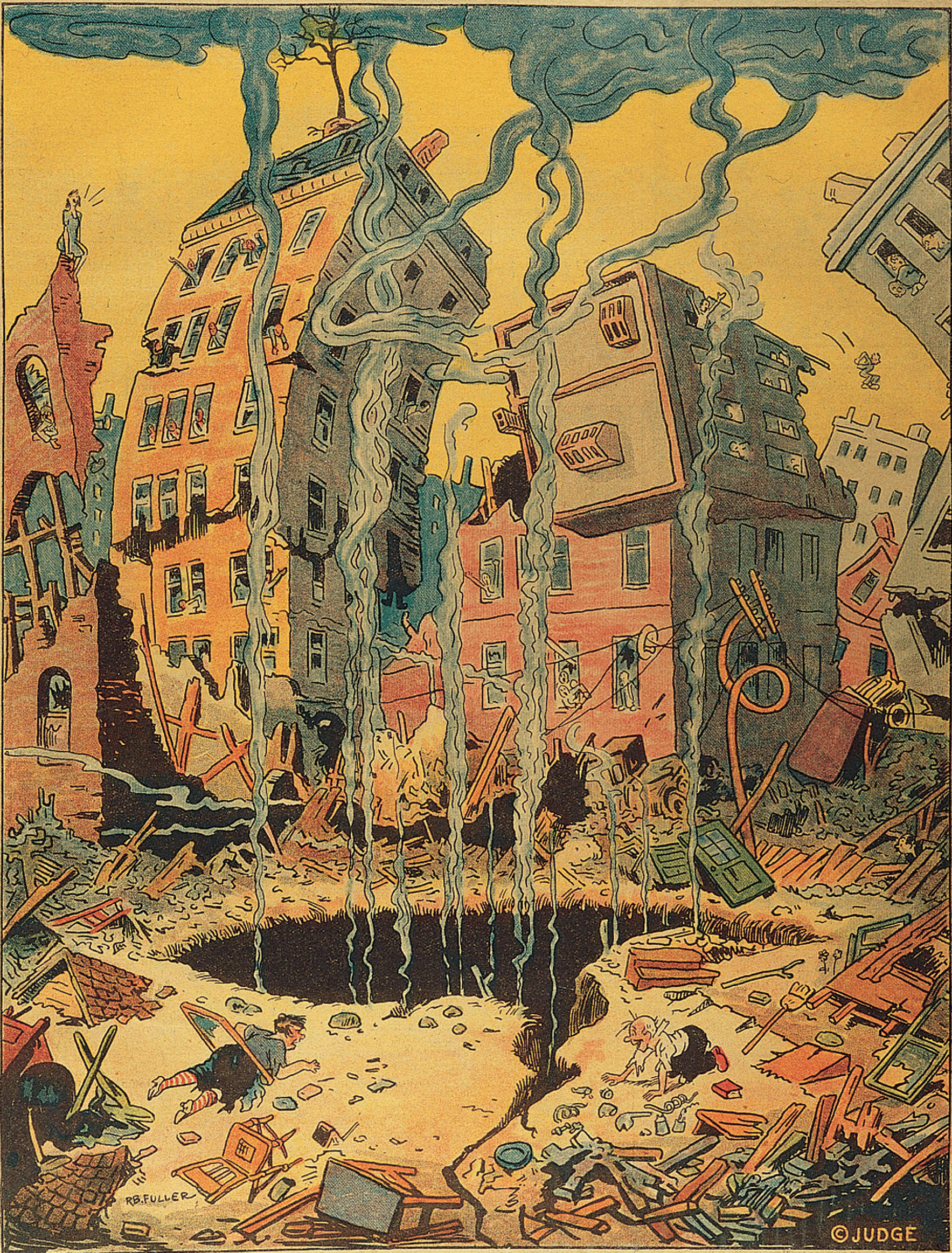A History of World Societies:
Printed Page 876
A History of World Societies Value
Edition: Printed Page 888
Chapter Chronology
The New Physics

Unlocking the Power of the Atom Many of the fanciful visions of science fiction came true in the twentieth century, although not exactly as first imagined. This 1927 cartoon satirizes a professor who has split the atom and has unwittingly destroyed his building and neighborhood in the process. In the Second World War scientists harnessed the atom in bombs and decimated faraway cities and their inhabitants. (© Mary Evans Picture Library/The Image Works)
By the late nineteenth century science, specifically Newtonian science (see “Newton’s Synthesis” in Chapter 19), was one of the main pillars supporting Western society’s optimistic and rationalistic worldview. Unchanging natural laws seemed to determine physical processes and permit useful solutions to more and more problems. All this was comforting, especially to people no longer committed to traditional religious beliefs. And all this was challenged by the new physics.
An important first step toward the new physics was the British physicist J. J. Thomson’s 1897 discovery of subatomic particles, which proved that atoms were not stable and unbreakable. The following year Polish-born physicist Marie Curie (1867–1934) and her French husband, Pierre (1859–1906), discovered radium and demonstrated that it constantly emits subatomic particles and thus does not have a constant atomic weight. Building on this, German physicist Max Planck (1858–1947) showed in 1900 that subatomic energy is emitted in uneven little spurts, which Planck called “quanta,” and not in a steady stream, as previously believed.
In 1905 the German-Jewish genius Albert Einstein (1879–1955) further undermined Newtonian physics. His theory of special relativity postulated that time and space are relative to the observer’s viewpoint and that only the speed of light is constant for all frames of reference in the universe. In addition, Einstein’s theory stated that matter and energy are interchangeable and that even a particle of matter contains enormous levels of potential energy.
The 1920s opened the “heroic age of physics,” in the apt words of one of its leading pioneers, Ernest Rutherford (1871–1937). In 1919 Rutherford first split the atom. Breakthrough followed breakthrough, but some discoveries raised new doubts about reality. In 1927 German physicist Werner Heisenberg theorized his “uncertainty principle,” whereby any act of measurement in quantum physics is affected by, and blurred by, the experimenter. Thus, if experiments in an exact science like physics can be distorted by human observation, what other areas of human knowledge are similarly affected? Is ultimate truth unknowable?
By 1944 seven subatomic particles had been identified, the most important of which was the neutron. The neutron’s capacity to pass through other atoms allowed for even more intense experimental bombardment of matter, leading to chain reactions of unbelievable force. The implications of the new theories and discoveries were disturbing to millions of people in the 1920s and 1930s. The new universe was strange and troubling, and, moreover, science appeared distant from human experience and human problems.
